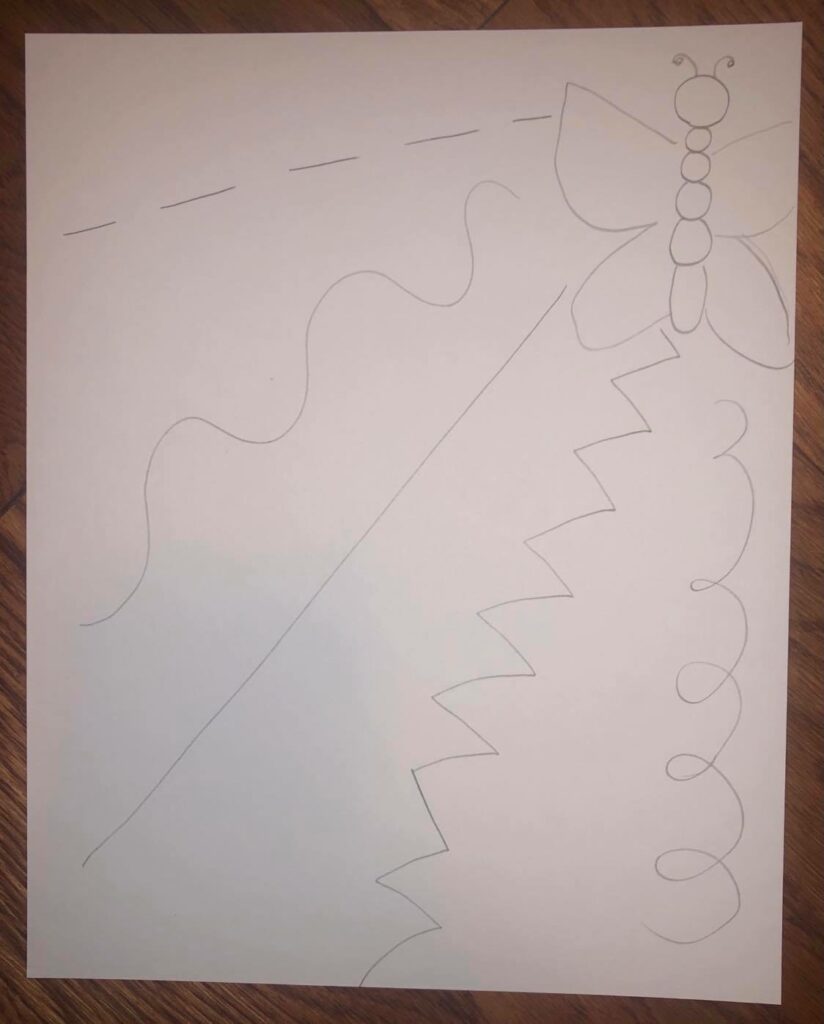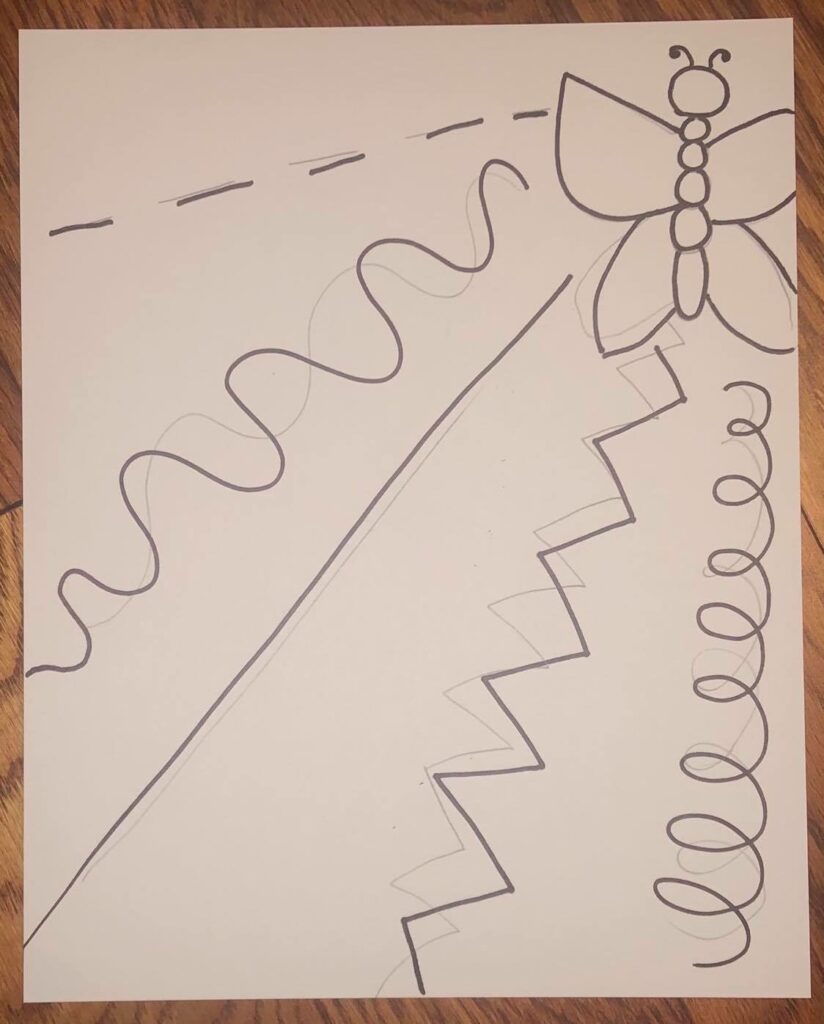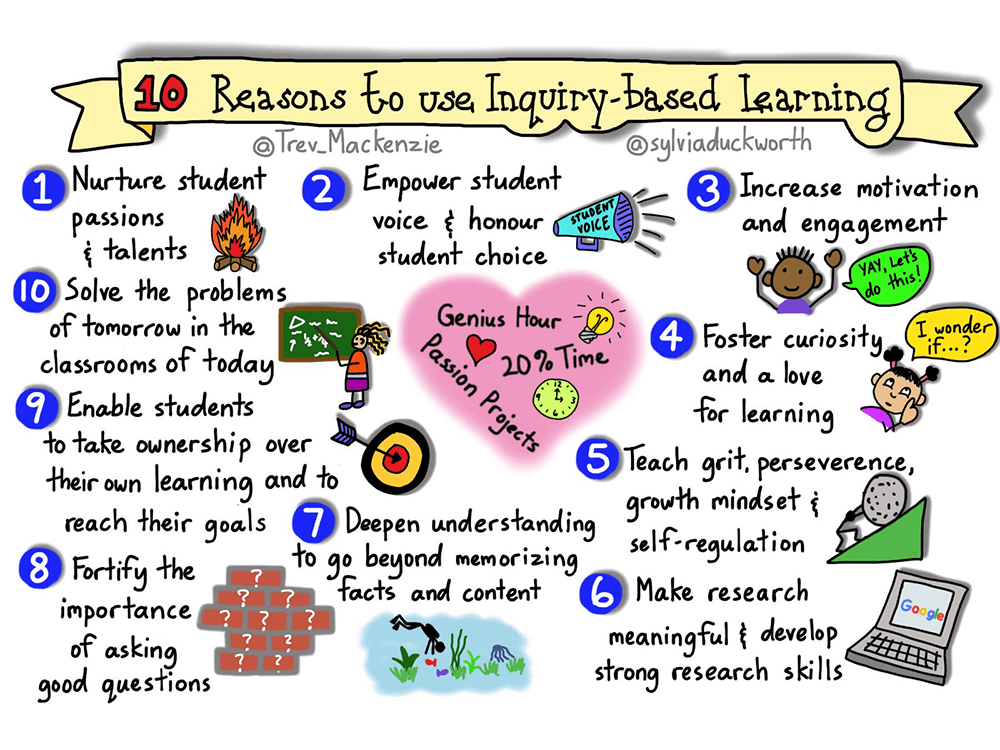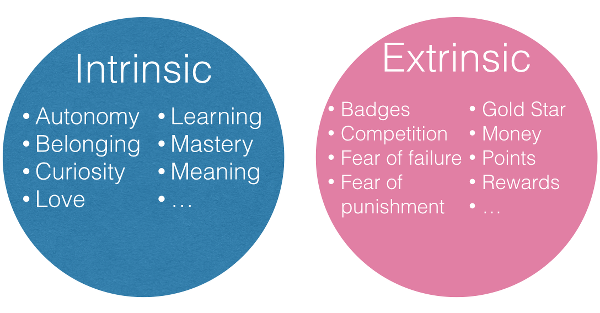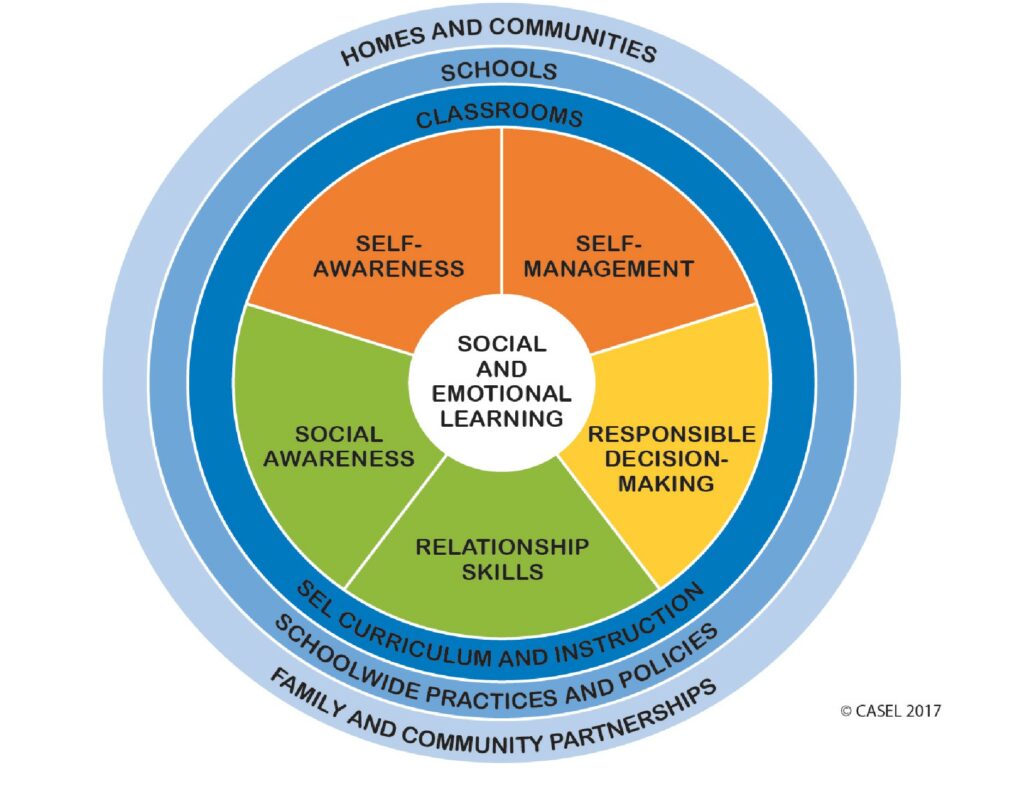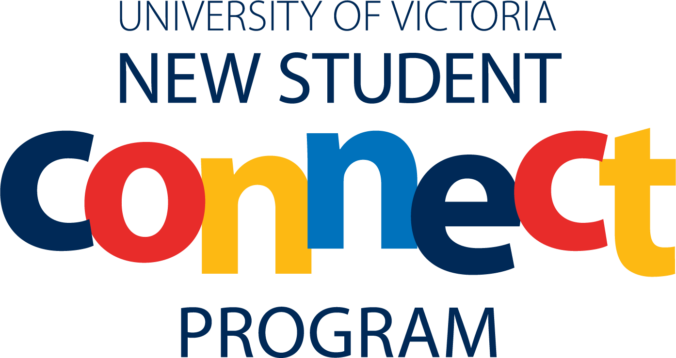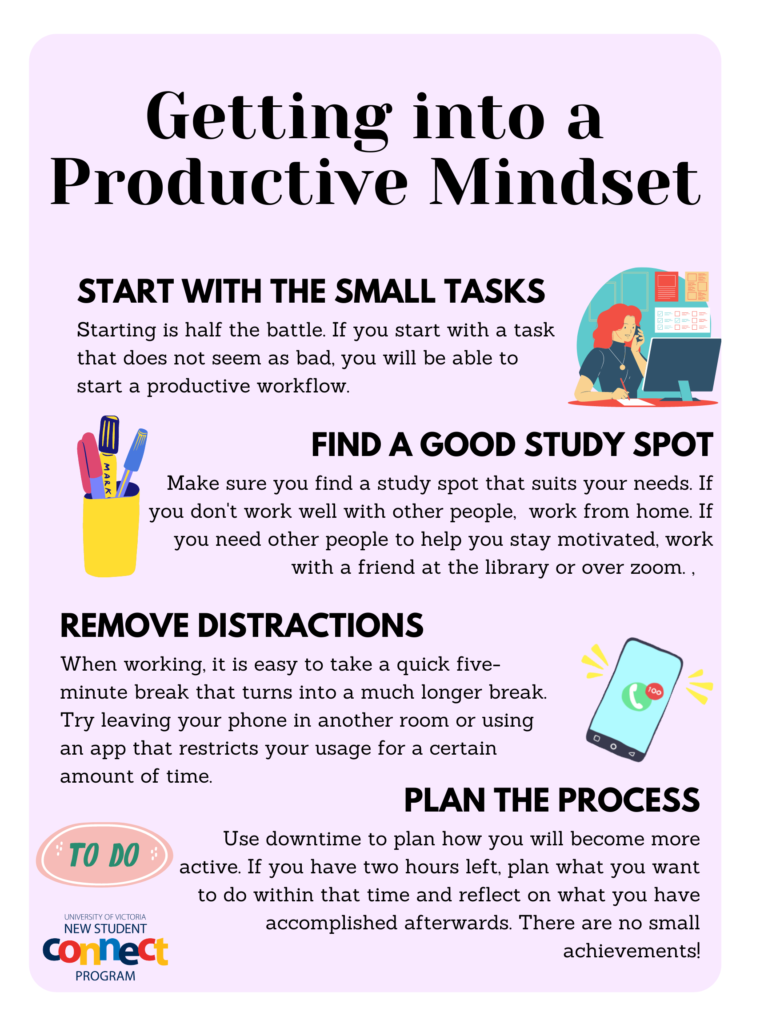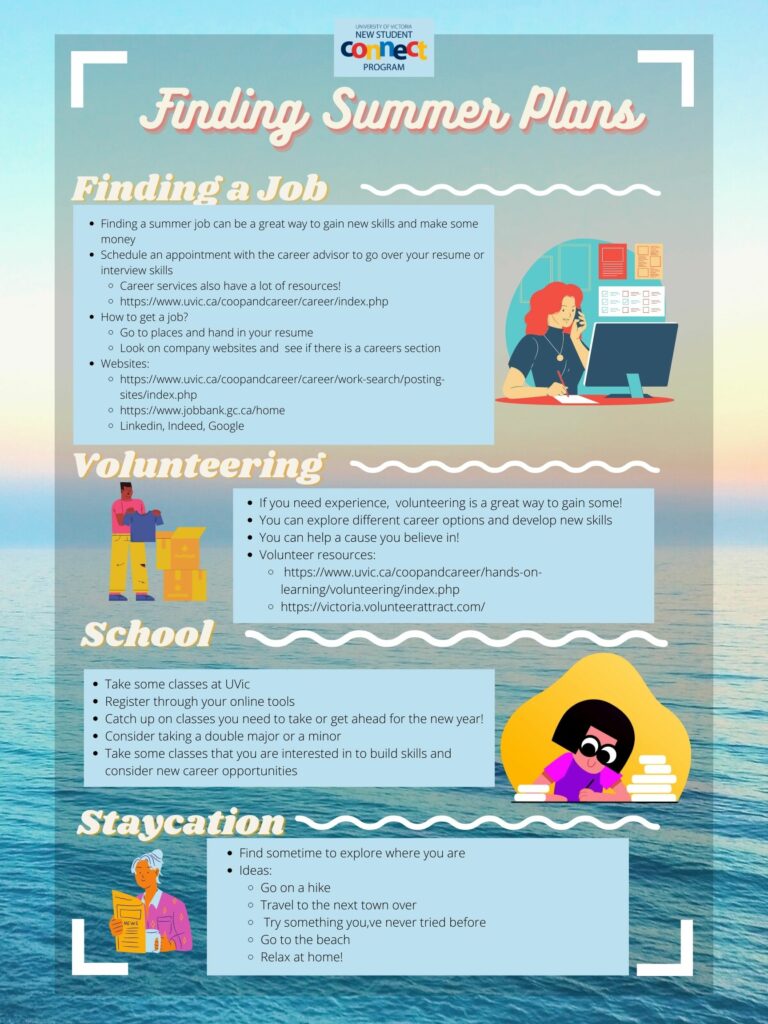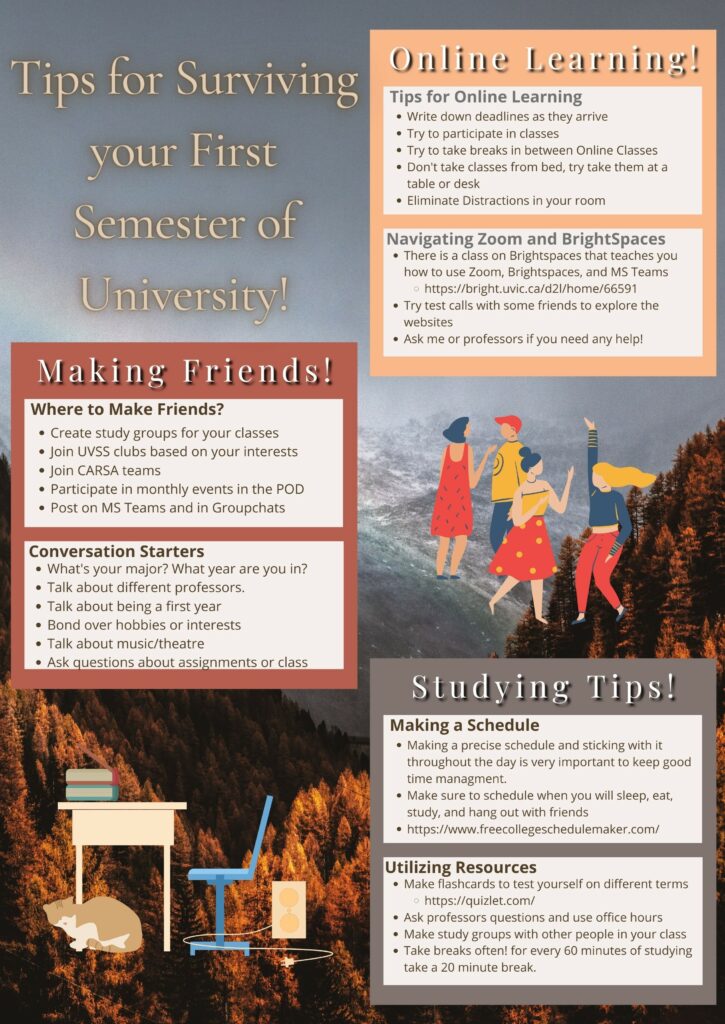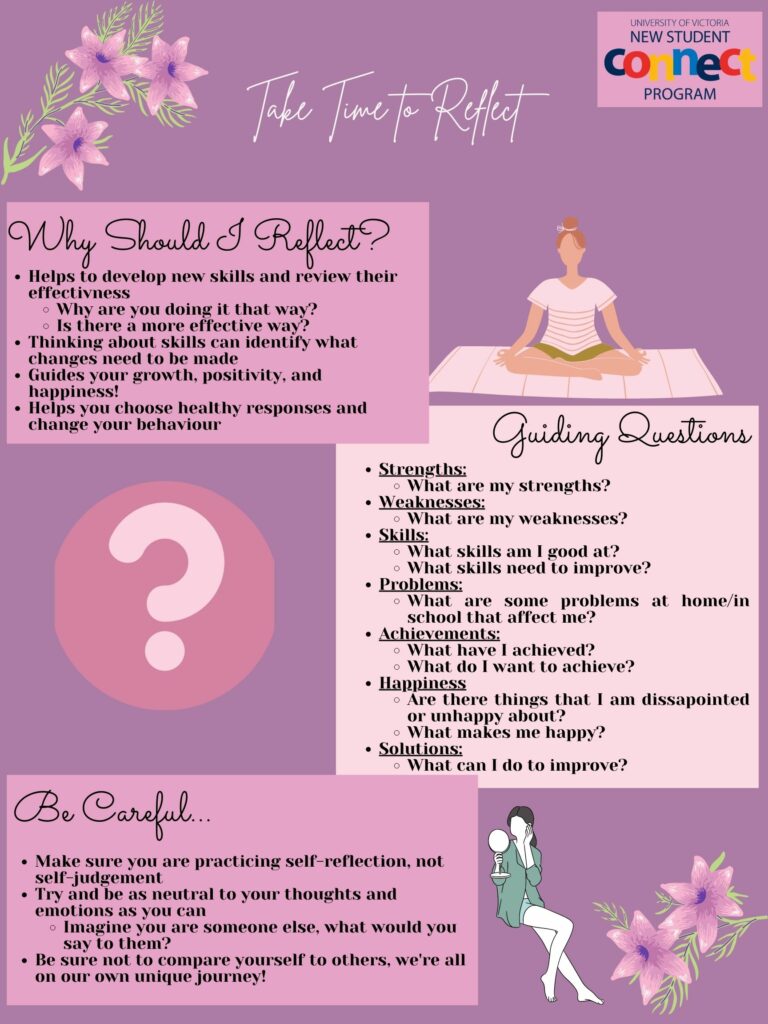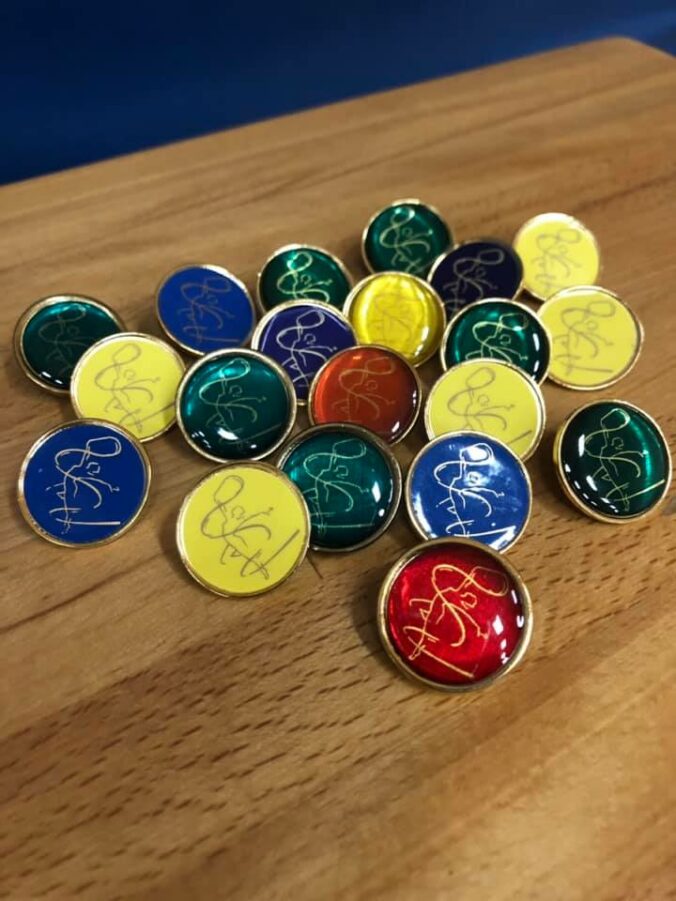This piece was a lot of fun to create! I enjoyed using the watercolour paints and it was simple enough to do. This assignment also breaks down line and movement really well for a student in grade one. When I first heard of movement, I thought it was when the art looked like it was moving. However, movement is when lines or something draw your eye to a certain part of the picture. In this demonstration, the five different lines are drawing my eye to the star!
For this project, I used the following materials:
- Watercolour paper
- Watercolours
- Paintbrush
- Pencil
- Eraser
I loved creating this art and think it would be great for a grade one class. The steps are all easy to follow and fun to complete. I started off by sketching the entire piece in pencil. Afterwards, I outlined it in sharpie. As you can see in the photo below, I did not trace over the pencil perfectly. This is when I deviated from the video and decided to take out my eraser and remove the lines; I think it looks much better!
I then traced over all of the lines with watercolour paint and I was left with this:
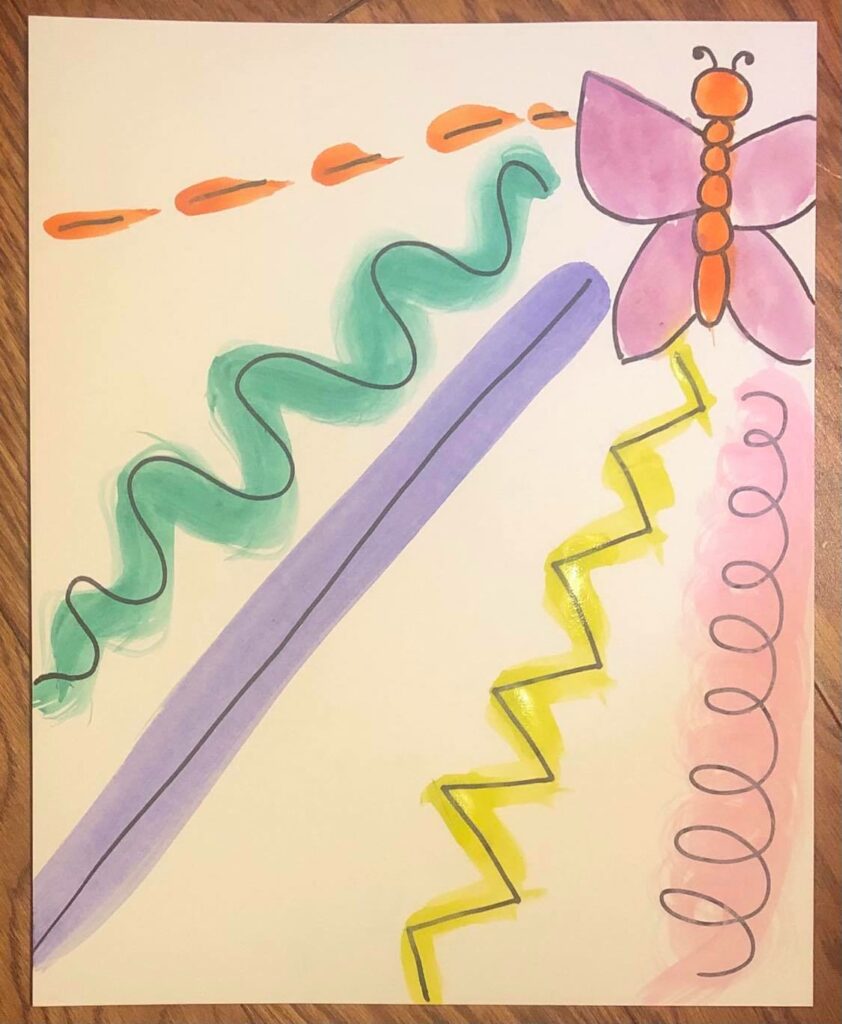
Pros:
- As I mentioned before, this is a great way to start teaching line and movement to a younger class. You can explain that the lines guide the eye over the the butterfly in the corner.
- There is still lots of experimentation within the project. Although most of the art is going to end up looking the same, everyone in the class can have a different object in the corner, different lines, or different colours.
- When picking colours, you could bring in emotion and colour and have the students use colours that they believe represent the emotion of the line.
Cons
- The activity may be too simple. Since the students are drawing an object in the corner and lines from it, it may be too simple of an activity to engage them.
I would definitely use this activity in a class. It teaches movement and line really well and the pros definitely outweigh the cons. It is also an easy enough activity that will introduce students to the topic but will not take all day to complete.
